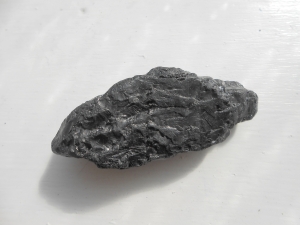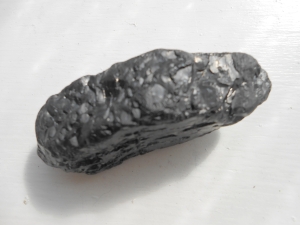The time has come to archive this blog. The purpose of this blog was to serve as a historical account of wide-scale pollution that lasted over 100 years that affected many lives. History is important. Without it, we will repeat the same mistakes. In this fast-paced modern world, it gets buried online and we can’t let it be forgotten. People come and go, and local folklore is lost when those who lived it are no longer around to tell the story. Thankfully, with the internet, we can create a record of what happened. There are still many documents on the internet that detail the pollution, the fight of citizens to stop it, the bankruptcy of a giant, and the plans developed by the EPA to clean up the pollution. All of which can be printed out, screen captured, or downloaded for future preservation. I encourage you to do so. Create an archive. Tell the story to younger generations so this will not happen again.
Progress
Looking at the 2019 Toxic Release Inventory report, you can see significant improvements in pollution. It is an improvement from the 1980s and 90s.


Researching:
When doing internet searches for old articles, the following terms are helpful:
EPA, Kodak, Rochester
- Kodak, Rochester, Cancer Clusters
- RED Rochester, Kodak
- Kings Landing Wastewater Treatment, Rochester
- Weiland Road, Toxic Waste, Kodak
- Dump sites, Kodak, Rochester
- NY DEC, Kodak
The Democrat and Chronicle is also a great resource for old articles involving Kodak, and many show up online. This article from May 2003 called Kodak’s Toxic Moments details the real life of actual residents and the health problems they endured living close to Kodak. The other is a paper about toxic releases and their effeects on health. This article mentions 23.6 million pounds of 65 of those dangerous chemicals Report on Chemical Emissions Places Kodak in a Poor Light (1988)
The EPA keeps Toxic Release Inventories (TRI) for facilities across the U.S, and they include Kodak. They can be found by visiting the EPA website and searching by address, zip code, or company name.
Residents:
If you are a resident and want to know how things are today, you can contact Genesee River Watch, Citizens Environmental Coalition, or NY DEC.
If you are experiencing pollution from The Park, report it to the NY DEC or the EPA. They can assist you..
My Final Note
What happened to those living around Kodak was a tragedy and one that should not be forgotten or repeated. Many, including children, suffered rare cancers or illnesses, and some died. Yet nowhere is there a victims wall to remember them. While many are nameless to me, some are not. I knew them, and their lives were cut short. It was one of the driving forces for this blog. They were victims of a time when no one thought twice about dumping chemicals out the back door on the ground. It was a time when corporations were not accountable while pumping tons of cancer-causing chemicals into the air or on the grounds.
This same story happened all over the country, anywhere industry resided. It is still happening today. While we have better oversight, it’s far from perfect and industrial pollution continues. It’s only through citizens’ actions that these things change.
This blog was to tell the story of those who lived under the stacks. We wanted to leave a record of what happened there so that future generations may learn and avoid repeating this horrific environmental disaster.






![Screenshot 2022-07-29 at 12-38-36 Last coal cars roll into Kodak area, making final delivery as power plant converts to gas[...]](https://kodakstoxiccolors.files.wordpress.com/2018/01/screenshot-2022-07-29-at-12-38-36-last-coal-cars-roll-into-kodak-area-making-final-delivery-as-power-plant-converts-to-gas....png)
![Screenshot 2022-07-29 at 12-42-29 Last coal cars roll into Kodak area, making final delivery as power plant converts to gas[...]](https://kodakstoxiccolors.files.wordpress.com/2018/01/screenshot-2022-07-29-at-12-42-29-last-coal-cars-roll-into-kodak-area-making-final-delivery-as-power-plant-converts-to-gas....png)

 That’s a lot of coal which makes a lot of
That’s a lot of coal which makes a lot of ![DSCN5418[1]](https://kodakstoxiccolors.files.wordpress.com/2015/04/dscn54181.jpg?w=300)

